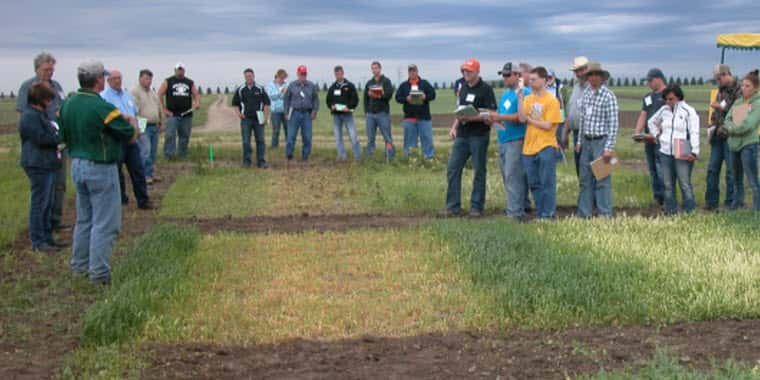The 17th annual Dakota Feeder Calf Show is set for Saturday, Oct.17, in Turtle Lake.
Cattle will be accepted at the Turtle Lake weighing station before 10 a.m., then exhibited as groups of three or four head. The spring-born steer calves consigned to the show then will be fed to market weight at the North Dakota State University Carrington Research Extension Center’s feedlot.
The NDSU Extension Service is partnering with the Dakota Feeder Calf Show on the show and feedout project to provide cattle producers with an opportunity to experience retaining ownership of cattle beyond the cow-calf phase of production. Producers who consign their calves to the feedout program will receive performance and carcass data.
“When cattle or feed prices are low or high, it’s important to know how well your cattle perform through the market chain,” says Karl Hoppe, area Extension livestock specialist at the Carrington Research Extension Center. “This cattle feedout project will give producers information on how their calves perform in the feed yard and on the calves’ carcass value.”
For Turtle Lake-area cattle producer Darwin Chesrown, the information the feedout project provides has been invaluable.
“I found my calves were gaining well but not making the ‘quality’ grade,” he says. “I switched bull breeds and am doing much better. Feeding calves to finish has changed our breeding program.”
He has been consigning calves to the show every year since it started.
The show and feedout are an entry-level way of learning about retained-ownership options with three or four calves instead of 100, according to Hoppe.
During last year’s feedout, the calves gained an average of 697 pounds in 207 days, with a total feeding cost (excluding interest) of 66 cents per pound of gain. The average sale weight was 1,353 pounds. The calves were fed with a market weight break-even point of $164.19 per hundredweight.
“It’s the variation among cattle that makes this project educational and a real eye opener,” Hoppe says.
In the 2014-15 feedout, the spread in net return per head between the average of the top and bottom five herds was $302.83. The spread becomes more noticeable between the top and bottom herd: The top-profiting herd made $270.23 per head while the bottom herd lost $206.63 per head. Weight gain per day of age was 4.03 pounds for the top-profiting herd and 3.19 for the bottom herd.
“Small differences in production have a huge impact on profit,” Hoppe says.
Feedout project staff will gather data on the rate of gain, feeding costs and other characteristics during the trial. After the calves are marketed, the staff will collect and provide information to the entrants on carcass weight, meat quality and value.
Producers will be assessed an entry fee of $20 per calf. Dakota Feeder Calf Show officials will present awards to producers at the end of the trial.
For more information or to preregister calves, contact Hoppe at (701) 652-2951; or Chesrown, Turtle Lake Farmers Union Oil, at (701) 448-2356. Cattle may be registered the day of the show, but the feedout is limited to 180 head.
Source: NDSU Agriculture Communication


